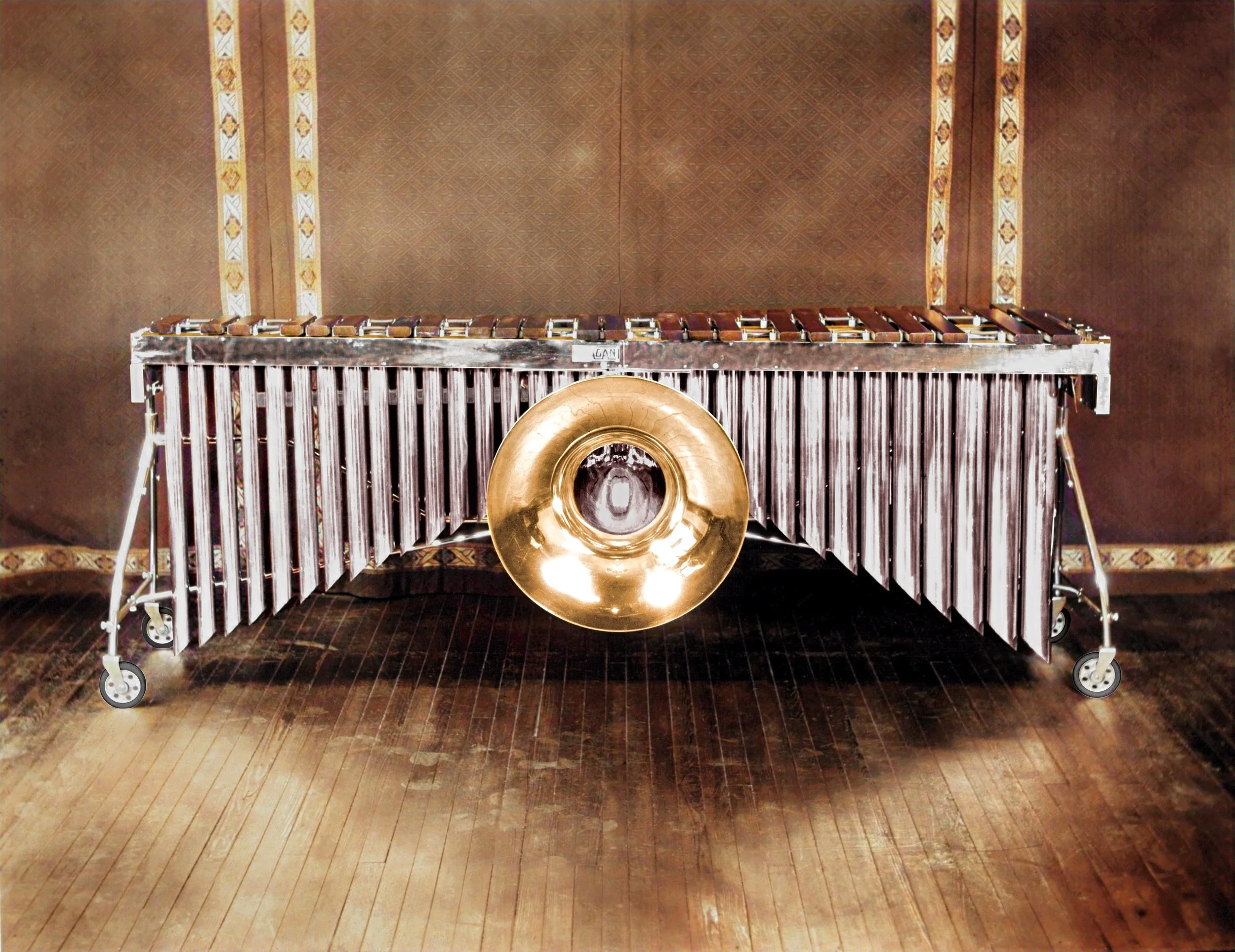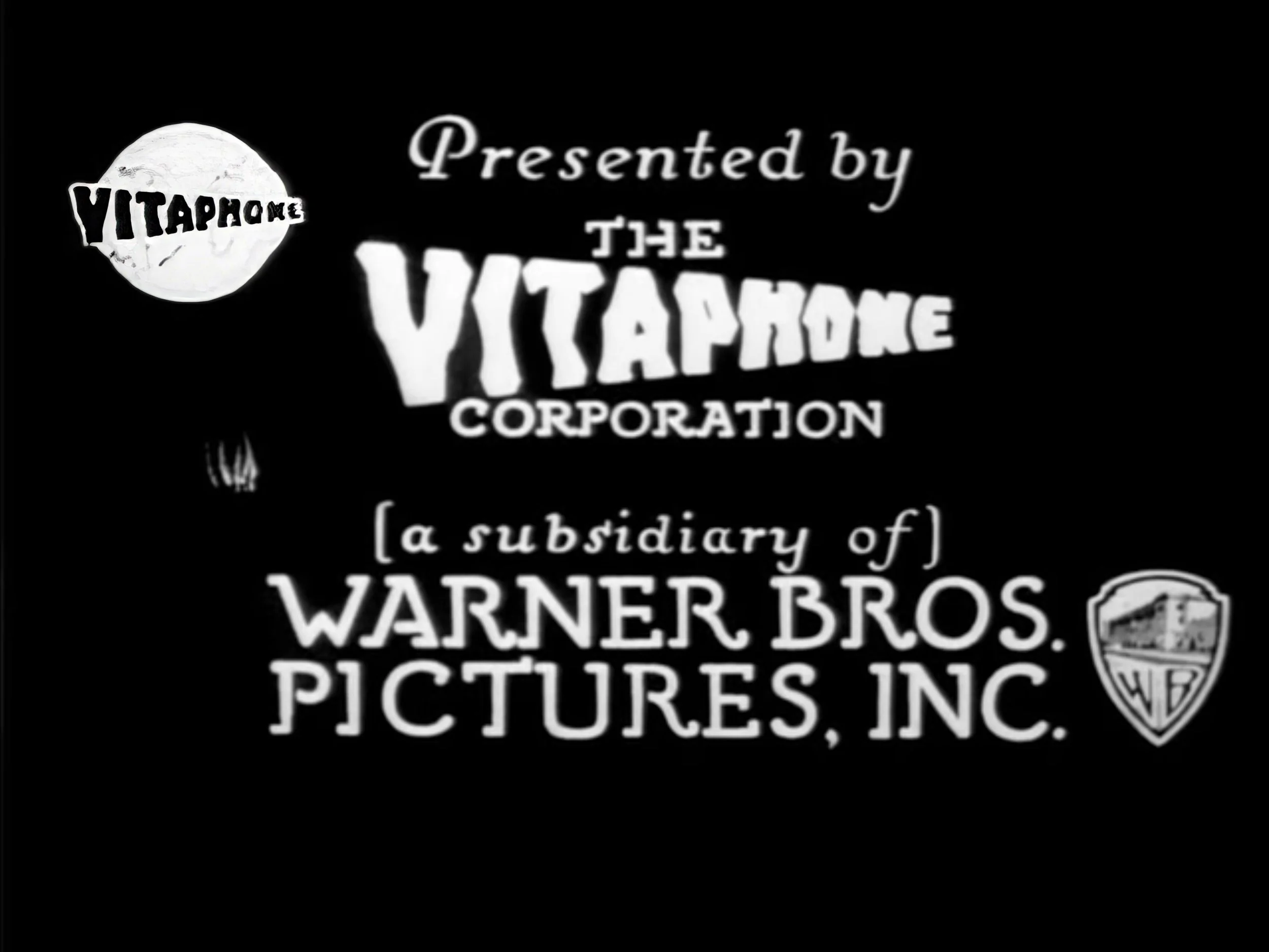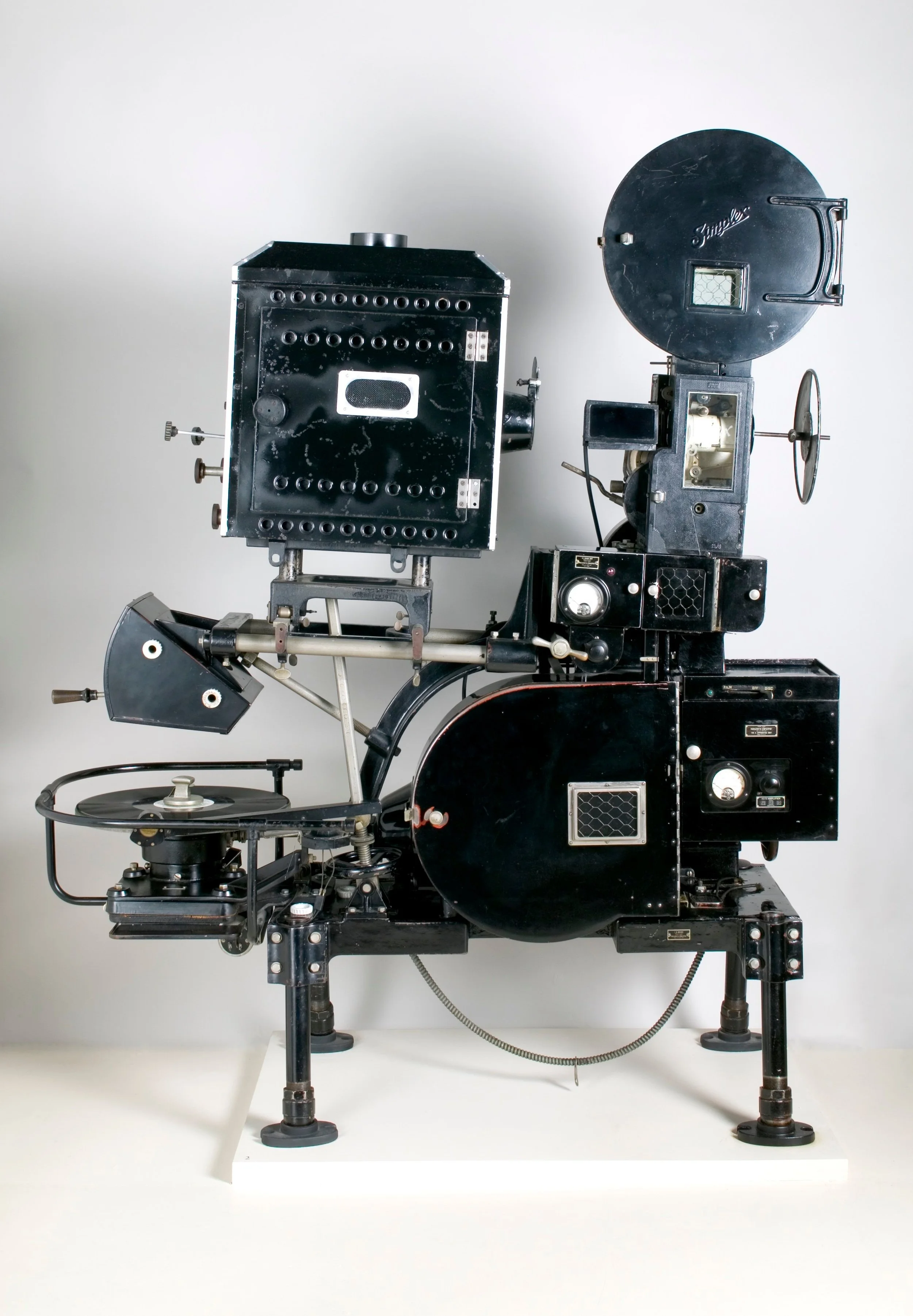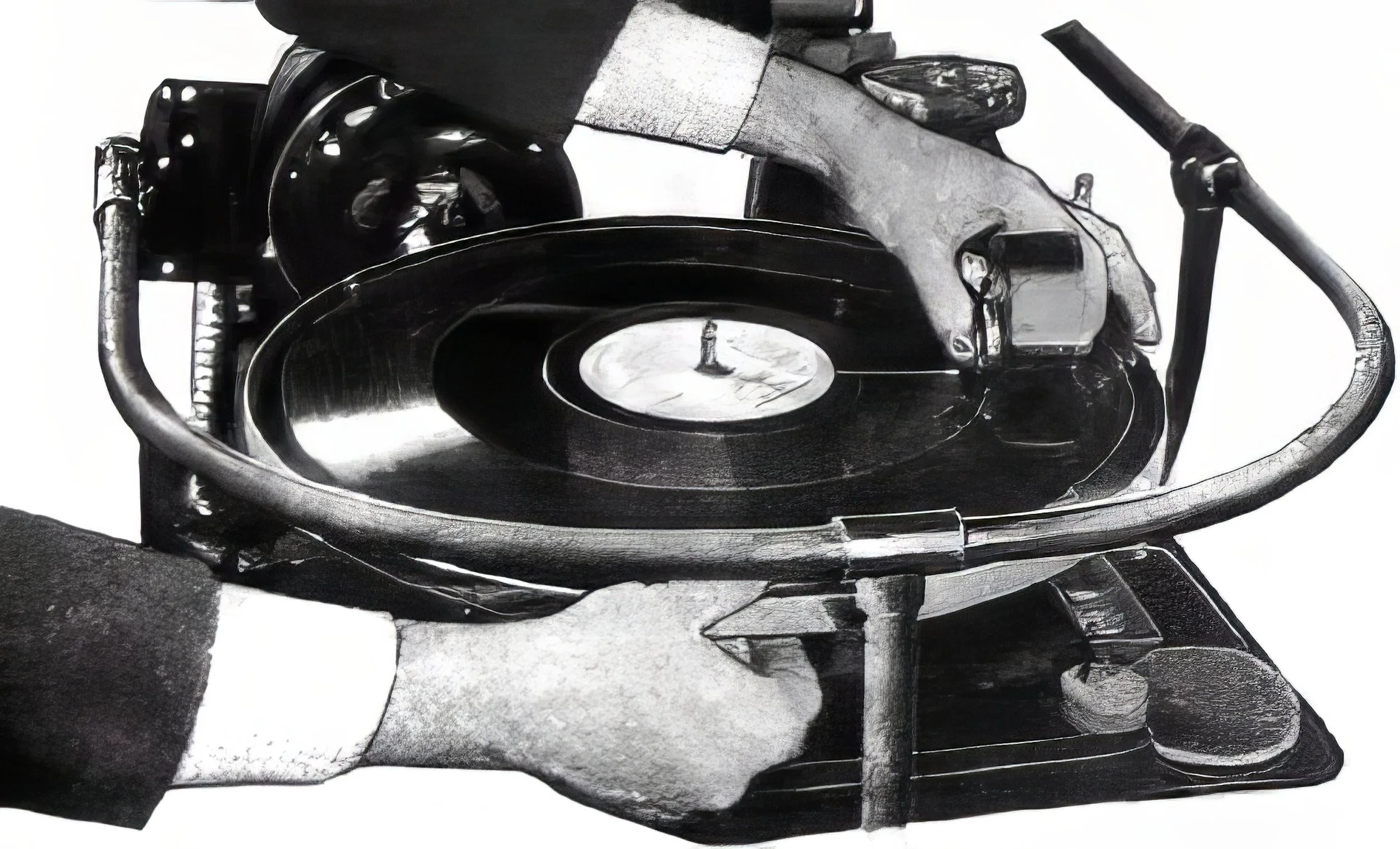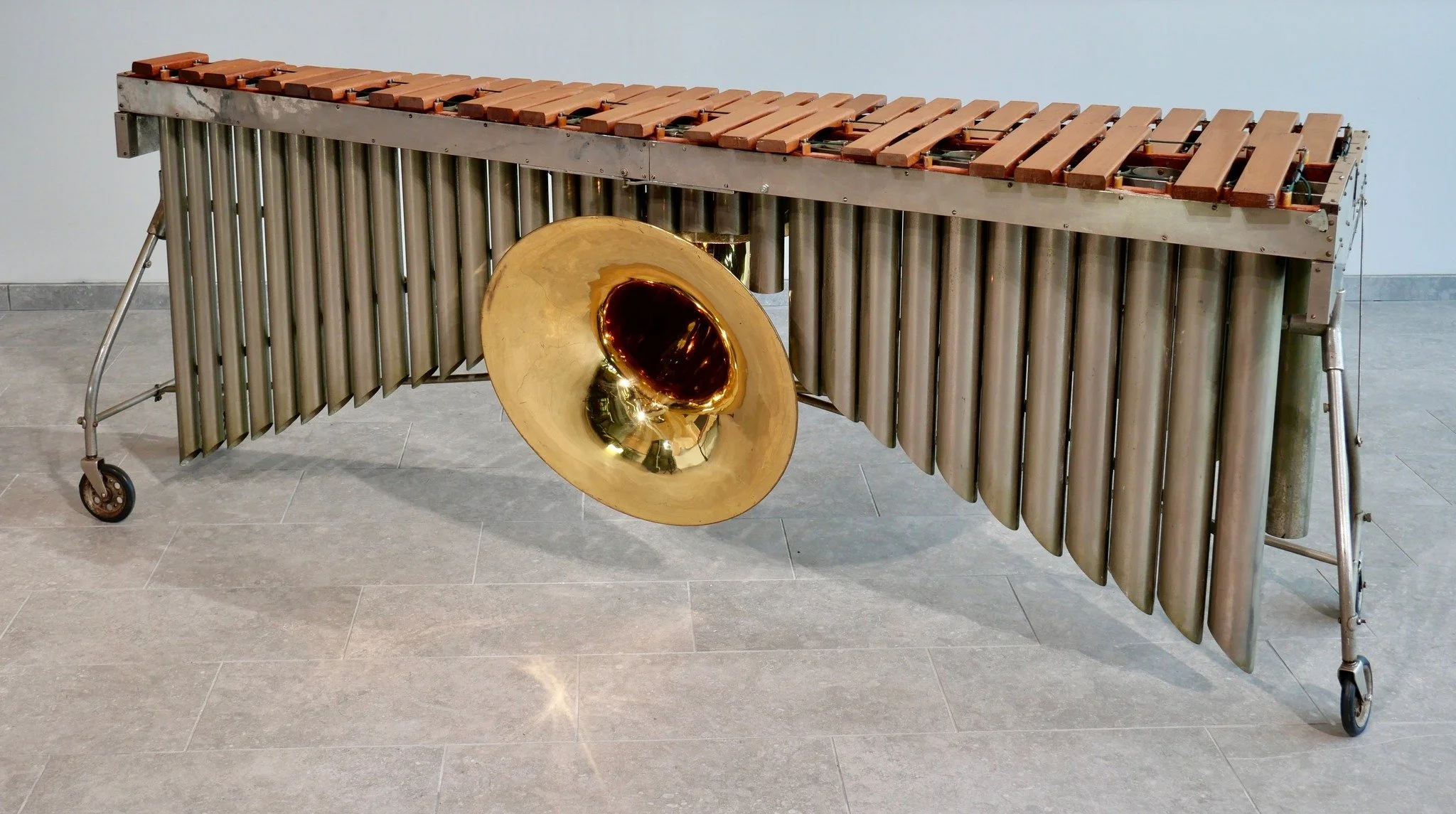The Deagan Vitaphonic Marimba
David Harvey
Photo 1
The Deagan Vitaphonic marimba is a one-of-a-kind instrument designed by Clair Musser (1901-1998) over a two-year period, with manufacturing completed at the Deagan plant in Chicago in the Spring of 1927. [Photo 1] This marimba had a keyboard tessitura of 4 octaves and a fifth from C3 to G7, and was amplified, making it the first electric dynamically enhanced mallet percussion keyboard in history.
The term “Vitaphonic” is a derivative of “Vitaphone.” This was the brand name for motion picture films produced during the 1920s by Warner Brothers, as well as the equipment those films were played on. [Photo 2] In those years, Clair Musser was performing marimba in theaters that featured Vitaphone films, whose audio content was broadcast through a massive horn amplification system. It was customary for live music to be performed in between Vitaphone films, in order to keep the audience engaged and lingering in the theater.
Photo 2
Photo 3
Photo 4
The problem Musser encountered was that the robust volume of the Vitaphonic broadcasts completely filled the theater, leaving his marimba tone comparatively weak. The ever curious Musser therefore studied the Vitaphone broadcasting method and its electrical components in detail. [Photos 3 & 4] He then applied that amplification technology to a marimba design, which he paid the Deagan company to custom fabricate to his specifications. The cost was $7,200, which is the equivalent of $120,000 today! [Photo 5]
Photo 5
Musser’s marimba audio system consisted of one or more condenser microphones wired to a driver box, which sent a signal to a dynamic speaker located in the base of a large brass bell resembling, and possibly sourced from, a tuba or Sousaphone. From impressions of contemporaneous witnesses, it seems possible that only the bass register of the marimba was amplified, though no detailed corroborating technical information is available. Theater goers claimed the effect of the Vitaphonic marimba to be miraculous, describing its sound as similar to a huge cathedral organ.
Musser no longer had problems competing with theater sound systems, and with his new marimba he continued his theater work for a short period. He then departed on a European concert tour in April of 1927, continuing through that summer. In October of that year, Musser brought the Vitaphonic marimba to Hollywood where he performed as feature subject in a Vitaphone film. [Photo 6] By age 26, therefore, Clair Musser had progressed from performing alongside Vitaphone films to being featured on the big screen in Vitaphone theaters in his own film showcasing an instrument of his design!
Photo 6
Photo 7
The Vitaphonic marimba survives today, and is housed at the Center for Mallet Percussion Research at Kutztown University. [Photo 7] Unfortunately, the electrical components are not present. Only the brass bell remains from the original amplification system. This remarkable marimba stands, nonetheless, as a monument to a seminal moment in marimba history, and the intellectual prowess, talent, and charisma that was uniquely Musser.
